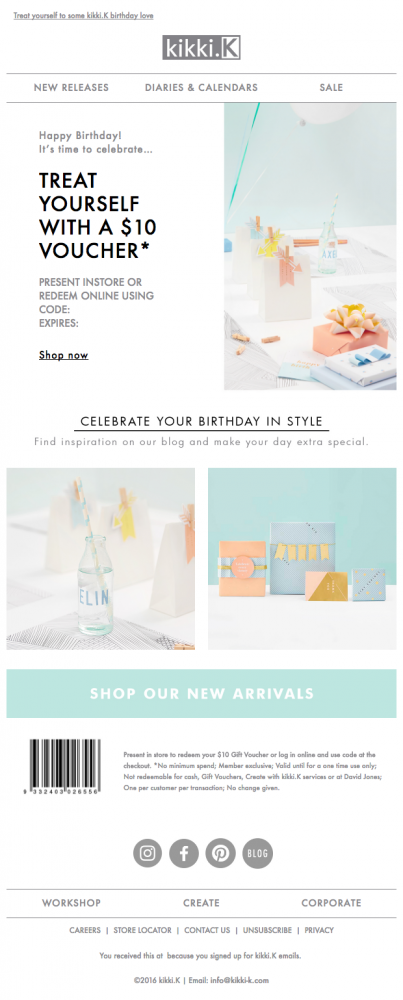Planning, designing, coding and scheduling email marketing campaigns can be a time consuming and often costly process. Especially if the types of campaigns you’re running are repetitive and require a campaign manager to repeat the same process on a regular basis.
If you could automate a lot of those processes, it would almost be like having an additional marketing resource, working in the background, sending out campaigns for you, generating opens and clicks and driving continuous revenue!
Well, that’s exactly what triggers are in email marketing. These are automated emails “triggered” by a pre-determined event. Their content can range from an automated monthly “Don’t forget to check your wish list” to a happy birthday message, to a full Welcome Programme. Triggers may be set up based on a number of different actions. Depending on the depth and breadth of your email marketing, you may want an extensively built out trigger campaign or you may want to start with just one when a new address opts in.
Triggers can be set based on any of the following subscriber actions:
- Joins a mailing list
- Completes a survey
- Clicks a link
- Opens an email
- Updates profile
- Whose demographic is a specific value, in conjunction with an action
- Visits a web page after receiving a message, requires an action tracking tag on website
Types of Triggers
The great thing about triggers is that they are highly relevant to recipients because they are based on something that the subscriber has done – an exchange or an event in time that “triggers” the email.
- Transactional triggers are based on a transaction with a specific email subscriber; for example, a confirmation email after a purchase is made or after items have shipped, or as a result of the subscriber registering for a conference or Webinar.
- Activity-based triggers result from things like clicks on an email link or visits to a specific Web page. Triggers can also be set up to re-engage email subscribers in response to a period of inactivity or a change in buying patterns.
- Event-based triggers are email messages like birthday greetings, offers made on the anniversary of a first purchase, or alerts that go out when an item is now in stock or available in your size.

Where to Begin
Try starting out with a trigger based on opt-ins. When a new member joins your list, send a Welcome Email that includes brief content around what kind of information you’ll be mailing, a clear unsubscribe, and a link to the profile centre on your website (if applicable). A welcome trigger is a great way to both begin the relationship and create immediate engagement. You aren’t the only one tracking engagement metrics, ISPs are too. Especially with priority inboxes, ISPs are taking engagement metrics even more seriously and the more engaged your recipients are from day one, the better.
Keep it simple
Simplicity reigns when it comes to your email marketing. One of the goals of setting up a trigger campaign is to automate part of your email marketing; don’t reinvent the wheel. Your trigger campaign should be aligned with your brand’s message and tone. Start small; begin with one to four emails that centre around opt-ins. Once these are in place and performing well, set up another set of triggers around purchase history and cart abandonments. Don’t set up triggers simply to set them up, make sure they have a purpose so that they’re pertinent and valuable to both you and your list.
Test & Optimise
And don’t forget to test! With triggers, you can test and learn on the fly. Watch your triggers’ performance, learn as you go, and make adjustments as needed.
Want to learn more about Email Marketing Automation? Download our white paper, Email Marketing Automation – Improve ROI Without Lifting a Finger.
